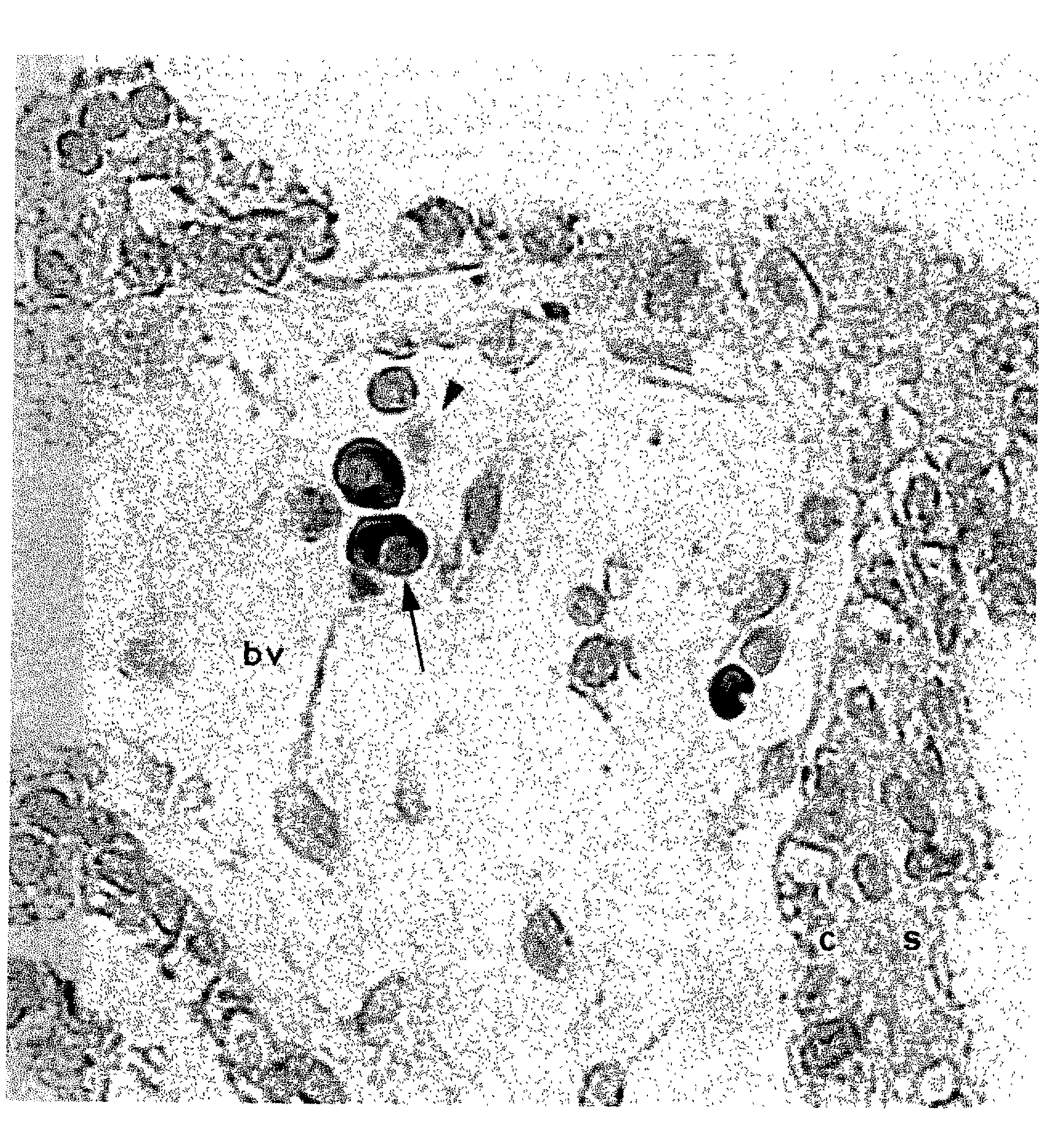Prenatal diagnostic methods
- Summary
- Abstract
- Description
- Claims
- Application Information
AI Technical Summary
Benefits of technology
Problems solved by technology
Method used
Image
Examples
example 1
Antibodies Directed at Adult Liver Components
[0108] Antibodies directed against purified rat liver testosterone / 4-nitrophenol UDPGT are raised in Suffolk Cross Blackface sheep by a combination of intradermal and subcutaneous injection. IgG is prepared from the antiserum by a combination of ammonium sulphate precipitation and diethyl aminoethyl-cellulose chromatography (Burchell et al. (1984) Biochem. Soc. Trans. 12, 50). Typically sheep antirat liver testosterone / 4-nitrophenol UDPGT antibody preparation (RAL 1) inhibit UDPGT activity towards bilirubin, testosterone, 1-naphthol, androsterone, estrone, and morphine, and inimunoblotting confirms a broad spectrum of cross-reactivity to multiple isoforms in rat and human adult and fetal liver microsomes.
[0109] Monospecific polyclonal antisera to the catalytic subunit of the microsomal glucose-6-phosphate system, T2, and T3 are each raised in Cheviot sheep by 3 subcutaneous injections of 80 .mu.g of purified protein and Freund's complete ...
example 2
Combined Immunocytochemical and Fluorescence in Situ Hybridisation Analysis of a Material Blood Sample to Detect Trisomy 21
[0116] Blood samples and cell preparation. Peripheral venous blood samples (EDTA) are obtained from a pregnant female in the first trimester. Five ml aliquots of blood are carefully layered over 3.5 ml aliquots of Polymorphoprep (Nycomed, Norway) in 15 ml tubes which are then spun at 500 g for 30 mm at room temperature. Mononuclear cells at the plasma / Polymorphoprep interface (upper of the two bands obtained) are harvested using a Pasteur pipette and dispensed into a clean tube. The cells are washed three times using 5 ml of cold phosphate buffered saline (PBS) containing 0.5% bovine serum albumin (BSA) and 5 mM ethylenediaminetetra-acetic acid (EDTA) followed by a 10 mm spin at 400 g each time. The cell pellets are finally resuspended in PBS / BSA / EDTA at a concentration of 106 cells / ml.
[0117] Slide preparation. Aliquots (100 .mu.l) of blood mononuclear cells are...
example 3
Isolation of Fetal Cells and PCR Analysis for Sickle Cell Anaemia and Thalassaemia
[0125] FIG. 1 (95chorion aGLUT2 1; 100X40RH) shows a human chorionic villus at 56 post-ovulatory days showing intense alpha GLUT 2 immunoreactivity in a megaloblast (arrow) and no reactivity in a normocyte (arrowhead) within a fetal chorionic blood vessel (bv). The syncytiotrophoblastic (s) and cytotrophoblastic (c) layers are minimally immunoreactive.
[0126] Fetal cells from maternal blood taken in the first trimester are isolated in the following way, and a PCR analysis for Sickle cell anaemia and thalassaemia undertaken.
[0127] Blood sample and cell separation. Peripheral blood (16-18 ml) from pregnant women in the first trimester is collected into EDTA Vacutainer tubes (Becton Dickinson, Rutherford, N.J.). The blood is then diluted 1:2 with phosphate buffered saline (PBS), with each 15 ml layered over 10 ml Ficoll-paque plus (density 1.077 g / ml, Pharmacia Biotech, Piscataway, N.J.) and centrifuged at...
PUM
| Property | Measurement | Unit |
|---|---|---|
| Fraction | aaaaa | aaaaa |
| Fluorescence | aaaaa | aaaaa |
Abstract
Description
Claims
Application Information
 Login to View More
Login to View More - R&D
- Intellectual Property
- Life Sciences
- Materials
- Tech Scout
- Unparalleled Data Quality
- Higher Quality Content
- 60% Fewer Hallucinations
Browse by: Latest US Patents, China's latest patents, Technical Efficacy Thesaurus, Application Domain, Technology Topic, Popular Technical Reports.
© 2025 PatSnap. All rights reserved.Legal|Privacy policy|Modern Slavery Act Transparency Statement|Sitemap|About US| Contact US: help@patsnap.com

